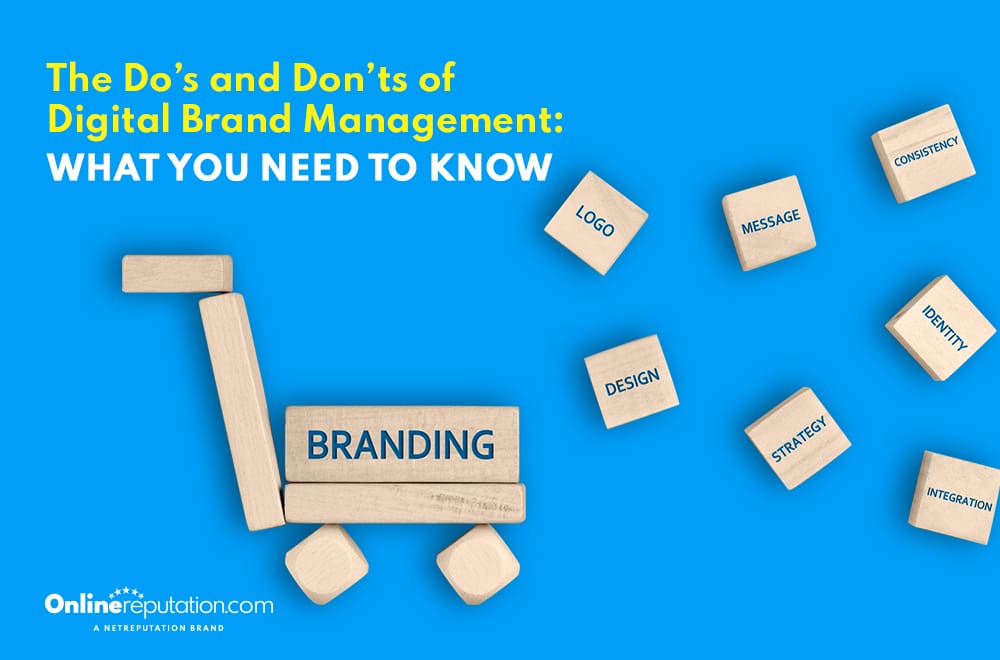
Effective brand management is essential for businesses to stand out and influence consumer perceptions and decision-making.
What is Digital Brand Management and Brand Identity?
Digital brand management involves various strategies for building, maintaining, and enhancing a brand’s image. Furthermore, a brand manager ensures that all messaging aligns with core values and communicates clearly with stakeholders.
In addition, digital tools play a significant role in boosting online visibility. Tools like website optimization and video marketing help reach a wider audience. These tools promote brand consistency and facilitate team collaboration, particularly in remote work settings.
Ultimately, a solid digital brand approach strengthens brand identity. It boosts customer retention and drives engagement with high-quality content and a user-friendly website.
The Importance of Digital Brand Management
Digital brand management is vital for shaping customer perceptions and driving growth. Specifically, managing an online presence builds trust, enhances engagement, and fosters positive relationships.
A strong brand identity on platforms like TikTok and Instagram is crucial, especially in today’s social media-centric world. Moreover, clear communication of unique selling points, consistent branding across channels, and customer engagement are key to success.
Businesses can adapt their strategies by personalizing content and monitoring feedback. This approach influences purchasing decisions and sets the stage for long-term success.
Brand Identity and Positioning
Defining Your Brand Identity
Building a strong brand identity includes visual elements like logos, colors, typography, and imagery. All these elements combine to create a consistent look that resonates with your audience, and importantly, they help set you apart from competitors.
To begin, research your audience’s needs and behaviors. This information will guide you in crafting an identity that meets your expectations. Afterward, develop a unique value proposition (UVP) that communicates your brand’s mission, values, and benefits. Make sure your UVP remains consistent across all platforms.
Additionally, creating a brand style guide is essential. This guide should detail your logo, color palette, and typography. Adhering to this guide prevents brand dilution and enhances recognition.
Brand Positioning
Brand positioning is the strategic process of creating a distinct image for your brand. It helps you occupy a unique place in the minds of your target audience.
First, research your competitors. This will help you identify their strengths and weaknesses and find opportunities to differentiate your brand. Then, develop a positioning statement that outlines your brand’s mission, values, and unique benefits. Consistently communicating this statement across all platforms reinforces your brand’s identity.
Furthermore, a brand messaging framework is crucial. It ensures that all content aligns with your brand’s value proposition. Doing so prevents brand dilution and strengthens brand recall, making your brand more impactful.
Managing Brand Assets
Organizing and Storing Brand Assets
Effective brand asset management is essential in digital brand management. Brand assets include logos, images, videos, and documents. Proper organization ensures these assets are accessible and used consistently.
For example, using a digital asset management (DAM) system can streamline this process. A DAM system provides a central location for storing and organizing assets, improving accessibility, and ensuring consistency.
Another strategy is to create a brand asset library. This collection of brand assets serves as a single source of truth. By maintaining a well-organized library, you ensure that brand assets are used correctly across all channels.
Additionally, brand management software can help. Such tools offer storage, organization, distribution, and analytics features. They allow you to track asset performance and make data-driven decisions.
Ultimately, organizing brand assets effectively reinforces a consistent identity and enhances your brand’s presence, setting the stage for long-term success.
The Do’s of Digital Brand Management
- Create a Strong and Consistent Brand Identity
A solid and consistent brand identity is key for effective digital brand management. It shapes how customers perceive your brand and ensures alignment across all marketing channels. Brand awareness campaigns are an integral part of this strategy, helping to reinforce your brand’s identity and values while fostering deeper connections with customers. Consistency in messaging, visual elements, and tone enhances brand recall and fosters trust. Businesses can build a solid digital presence and drive customer engagement by focusing on cohesive visuals, clear messaging, and a unified tone. - Use Social Media Effectively
Selecting appropriate social media channels that resonate with your target audience is crucial for building a solid online presence. Social media platforms like TikTok and Instagram are essential for engaging your audience and showcasing your brand. Effective use of these channels involves creating tailored content for each platform, such as high-quality visuals for Instagram and entertaining videos for TikTok. Interactive techniques, like polls and live Q&As, and leveraging user-generated content can boost visibility and build a loyal community. - Monitor Online Reviews and Feedback
Keeping track of online reviews and feedback is essential for maintaining a positive brand image. Engaging with customer feedback helps address concerns, improve the customer experience, and build trust. Active monitoring and timely review responses enhance credibility and loyalty, contributing to a more substantial brand reputation. - Engage with Your Audience
Engaging with your audience is vital for building a favorable brand image and fostering a sense of community. Surveys, interactive polls, and user-generated content can enhance communication and brand loyalty. Feedback loops through social media help ensure that marketing efforts align with customer expectations and support business growth. - Utilize Search Engine Optimization (SEO) Strategies
Effective SEO is crucial for improving online visibility and reaching your target audience. Key components include keyword optimization, website design, mobile optimization, and high-quality content. Using tools like Google Analytics helps refine strategies based on user behavior and traffic patterns, ensuring your digital presence remains solid and adaptive to changes.
The Don’ts of Digital Brand Management
- Neglecting Your Online Presence
Neglecting your online presence can damage your brand image and customer engagement. An inactive or poorly managed profile can reduce customer trust, lower visibility, and decrease sales. To maintain relevance and strengthen connections, businesses should regularly update their social media accounts, engage with followers, and create valuable content. - Ignoring Negative Feedback
Ignoring negative feedback can harm your brand’s reputation and customer relationships. Addressing criticism with empathy and professionalism shows that you value customer opinions and are committed to improvement. Effective response strategies include acknowledging customer concerns, using feedback for growth, and following up to demonstrate that issues have been addressed. - Inconsistent Brand Messaging
Inconsistent brand messaging can confuse consumers and weaken your brand image. A cohesive communication plan that aligns with your marketing strategy is essential. Establishing brand guidelines as a comprehensive rulebook ensures consistency in how your brand presents across various channels. Key elements include understanding your audience, maintaining a unified voice across platforms, and ensuring that content is synchronized to reinforce your brand’s message. - Overlooking the Importance of Visuals
High-quality visuals are crucial for enhancing customer engagement and brand appeal. Compelling visual content, such as striking images and engaging videos, helps communicate your brand message and capture attention. Color psychology and user-generated content can also improve interaction rates and foster authenticity. - Not Utilizing Data and Analytics
Failing to use data and analytics can hinder your understanding of customer behavior and the optimization of your marketing strategy. Tools like Google Analytics offer valuable insights into customer engagement, conversion, and bounce rates. Monitoring these metrics helps tailor your marketing efforts and improve overall effectiveness.
How to Develop a Digital Brand Management Strategy for Your Brand’s Online Presence
Developing a digital brand strategy begins with defining your brand identity. First, outline your brand’s values and goals to guide marketing efforts. Then, conduct a comprehensive brand audit to evaluate your current presence.
Afterward, craft a strategic plan for online engagement using a variety of content types. Regularly monitoring and adjusting this strategy based on data ensures that your approach remains effective and adaptive.
You might also like
How Data Broker Opt Out Can Improve Your Online Reputation and Privacy
Effective brand management is essential for businesses to stand out and influence consumer perceptions and decision-making. What is Digital Brand …
